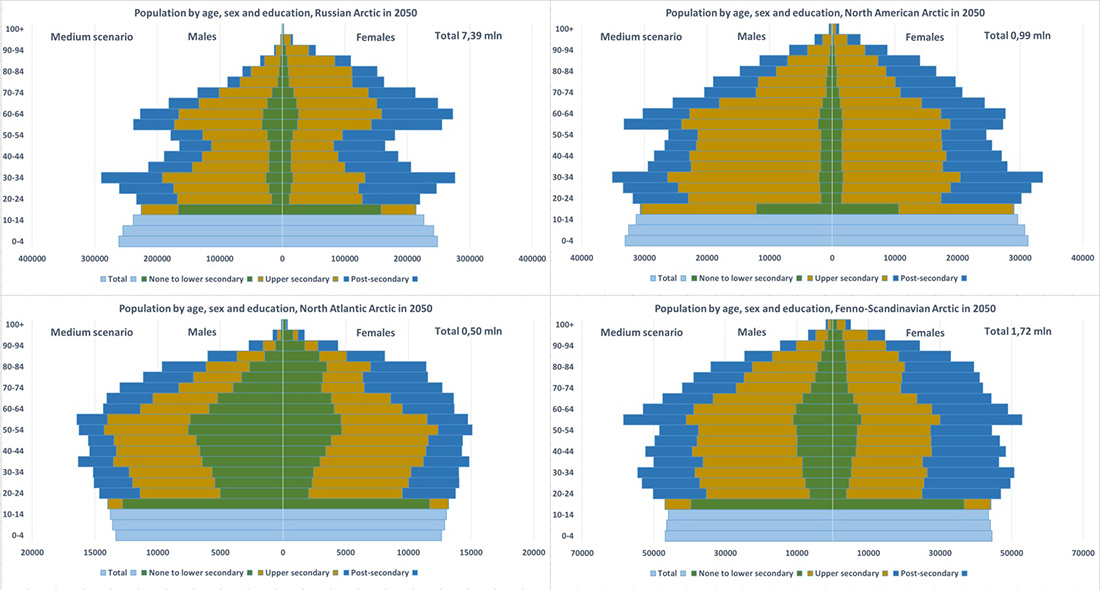
The future of Arctic populations
The Arctic region covers more than 10% of the planet’s total land area, but is one of the most desolate and least populated areas on earth because of its isolated location and harsh climate. Due to rapid and extensive changes in the region, people and places in the north are facing challenges to their livelihoods, environment, and culture. Climate change, industrial extraction, pollution, globalization, migration, and food- and water insecurity, along with widening socioeconomic gaps in the region, are not only affecting Arctic residents, but also have global consequences. Understanding the population dynamics and human capital associated with these changes will be crucial to finding solutions and addressing problems in the future.
In 2017, an IIASA study examined recent population developments in the Arctic and modeled future demographic trends towards 2050 [1]. To account for regional characteristics, the researcher incorporated assumptions on the processes of population change that are explicitly Arctic in nature in addition to global patterns. The age and sex parameters of interest, as well as the level of higher education based on the fertility and mortality of people with different education levels, were also explored.
This was done by applying three alternative scenarios for the future, which the researcher termed “medium development”, “arctic boost”, and “arctic dip” respectively. The medium development scenario projects a continuation of Arctic trends in the recent past, while the other two consider migration as a larger cause of demographic change. The arctic boost scenario implies a multi-faceted boom in the region based on an increase in the number of migrants, changes in climatic conditions, and technological developments. It also implicates faster education progression between educational levels, as well as an increase in the number of people with the highest qualifications who contribute to the boost. The arctic dip scenario in turn, entails accelerating out-migration as a driver of future population decline, combined with a number of larger constraints to development in the Arctic. In this scenario, the progression of population groups to higher levels of education is much slower or even halted for the highest educational levels, as many qualified students/professionals may decide to pursue further education and careers elsewhere.
The resultant population projections suggest how education as a factor of human capital may drive demographic shifts in northern parts of Canada, Denmark, Finland, Iceland, Norway, Russia, Sweden, and the US. The innovative approach of projecting the population by level of education has not previously been applied to studies on the Arctic. Several communities have already expressed interest in the results, which could provide value input for stakeholders on decisions concerning the future development of this highly vulnerable and complex region.
References
[2] Lutz W, Butz WP, & KC S eds, (2014). World Population and Human Capital in the Twenty-First Century. Oxford, New York. Oxford University Press.
IIASA Contributors
- Arctic Futures Inititative, IIASA
- World Population Program, IIASA






You must be logged in to post a comment.